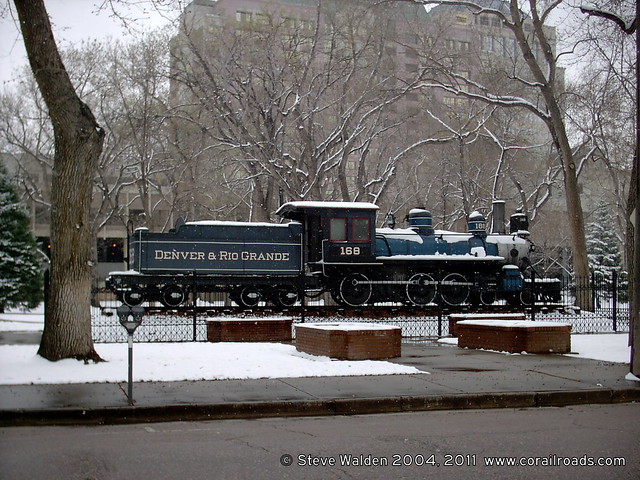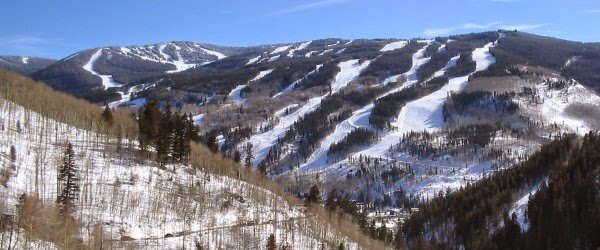 |
| Photo of the Day: Peter Lewis |

 |
| Photo of the Day: Peter Lewis |

 |
| Special Photo of the Day: Dave Straight |
 |
| The moment that the EPA folks might have said, "Uh... Oh, no." A small leak begins to seep a new flow after their exploratory excavation. Photo: EPA - Your government in action |
 |
| Photo of the Day: Kevin the Krazy 1 |
 |
| Photo of the Day: Kevin the Krazy 1 |
“A hoghead named Alvie Powell, brought the first 3600 into Phippsburg, Colorado approximately in 1947. Alvie was an engineer who worked over the hill in the D&SL Days. He was quite a character, and he liked the 3600’s.”
“The last two 3600's under steam were: the 3609 and the 3619. Ironically the last 2 numbered engines in each class. Sadly enough, the last day they operated, was Oct. 27th,1956. They left Tabernash that afternoon. Joe Preiss and Flory Iacovetto, engineer and fireman respectively. Both were D&SL employees. Joe was a veteran from the days on the line over Corona/Rollins Pass."
“About a week before their leaving Tabernash, A hostler let me up in the cab of the 3609."Just don't touch anything!" they told me. But I got to blow the whistle. I can't tell you how much of a charge I got out of that. Later on, we went over to a little diner across the highway. The cook had a little, black & white TV set on. It looked like a blizzard on Corona Pass! His rabbit ears antenna weren't much good. He started lamenting about those (censored) steam engines and how their steam generator "jacked up the reception." Plus the fact, some (censored) was blowing the whistle! Of course, needless to say I kept my mouth shut for a change. What a sight to see the 3609 pound out of Tabernash, tied to the tail of a Moffat Tunnel freight. ‘Twas quite a day.”
“Another character said he had a 3600 running at 75MPH, that’s right, 75MPH between Flat and Troublesome. If you’re not familiar with those names they are between Kremmling and Parshall along the Colorado River. I leave this one for you the reader to decide but…”
I don’t have too many 3600 stories. Dean was on the first one west with tonnage. He said the road foreman got off after a few tunnels and rode the caboose to Bond. He told Dean at Bond that he wouldn’t have ridden through another tunnel if they gave him what it cost new at the factory! He referred to it as ‘a miserable S.O.B!’ ... Frank Woodruff was on one west and they stopped someplace east of Bond. Don’t remember where. Frank went to the headend and the Hogger was passed out drunk. Frank told the fireman, who was promoted, to run the engine and he refused so Frank sent the head brakeman to the rear end and Frank ran the engine into Bond. He said, ‘That S.O.B., never thanked me for saving his job or even bought me a cup of coffee!’
Dean always remarked how bad they smoked. The company issued the crews some old WW1 gas masks and he said they were useless! The best they could do was keep a box of packing waste and a bucket of water in the cab. They would grab a wad of waste, dip it in the water, and cover their faces in it while going thru the tunnel. Dean also carried a small mirror with him to help pick cinders out of his eyes. He said he could get a cinder in his eye by just looking at a picture of a 3600. ... Dean said that there was a practice in helper service for other engines to be ahead of a 3600 because they put out too much smoke and heat that would about kill the crews on the smaller engine. He said they tried that at first but that didn’t last too long.”
 |
| 3607 at the Pueblo Coaling Tower on Feb 12, 1956 Dave Straight Photo |
 |  |
| 3619 near Fraser 10-20 1956 Dave Straight | 3619 at Tabernash CO 10-20-1956 Dave Straight |
 |
| L 131 3609 at Tabernash Colorado Sept 30, 1956 Dave Straight |
 |
| 3612 at Winter Park CO Sept 30, 1956 Dave Straight Photo |
 |
| 3609 at Winter Park CO Robert LeMessena Sept 1956 DPL-WHD Photo |
 |
| 3619 South of Tabernash CO 10-20-1956 Dave Straight Photo |
 |
| 3600 at Mitchell Curves with Train 35 on May 31 1941 R.H. Kindig, DL Straight Collection |
 |
| 3609 West of Malta CO with Train 33 with 71 Cars 3-24-1940 R.H. Kindig, DL Straight Collection |
 |
| 3606 and 1510 South of Littleton CO with 107 Cars 12-1-1940 R.H. Kindig, Dave Straight Collection |
 |
| 3612 at Tabernash Colorado Ready for Helper Service Sept 30, 1956, Dave Straight Photo |
 |
| 3602 at the West Portal of Tennessee Pass 3-24-1940 R.H. Kindig Photo Dave Straight Collection |
 |
| Rio Grande 168 rests placidly under a thin blanket of snow on April 10, 2004. Photo by Steve Walden* |
 |
| Only a year after her presentation on Aug 27, 1939 (DPL) |
.jpg) |
| June 13, 1943 Same engine and city but can you spot all that's changed in less than 4 years? Both photos: Otto Perry (courtesy DPL) |
 |
| Vail ski area, photo by David Benbennick |
Hi Tim!If you have a question for the editor, please use the form in the near column or send an e-mail to editor@corailroads.com◊
Good to hear from you via the site! I'd be happy to answer your question and if I don't quite answer your question or you have follow-up questions, please let me know!
First, a qualification. You don't mention the means you'd be traveling so I'll be just talking routes, not actual access to travel the routes. Any properties as well as your legal access to them are yours to discover and arrange, meaning none of what I say should be taken as an endorsement to pursue any activity, legal or otherwise.
Colorado's main expansion and consolidation of railroads happened between 1872 and 1917. Skiing, Vail's reason for being, did exist in a primitive way toward the end of that period, but didn't take off until after WW2. Vail as a town isn't much older than I am, incorporated in 1966, the ski area having been there for since 1962. So, if there was ever rail service near Vail, it would have been by coincidence, not by design of serving Vail.
The route over Vail Pass is the most direct candidate for a rail route to Denver. But it was completed in 1940 when the original US 6 was pushed through to Utah on it's way from Massachusetts to California. The grades over Vail Pass, at present, would be pushing the limits of rail technology. It would be very difficult without changing the route or the design of conventional rail travel.
The other direction out of the Vail Valley comes out at where Gore Creek flows into the Eagle River which is followed by the Tennessee Pass Route of the Rio Grande, the railroad that inspired the graphics for Colorado Railroads. It would be possible to follow that route all the way over Tennessee Pass and down the Arkansas River to Pueblo. That route has been out of service since 1997 (18 years this fall). Pueblo to Denver has been in active rail service since 1872, or thereabout. At present, Union Pacific owns both routes, in whole for TP and in part for the Front Range.
If you are interested in older routes, or in narrow gauge railroads that served nearly all the towns except Vail, I can go into further detail.
Keep Exploring!
Steve